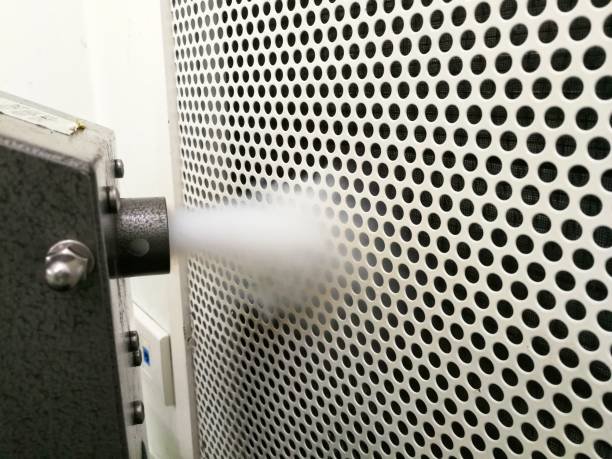Can the PAO System Be Used for Professional Memory Competitions?
Memory competitions have gained popularity over the years, and they showcase the incredible feats of human memory. Contestants in these competitions use a variety of mnemonic techniques to remember vast amounts of information in a short time. One of the most popular methods for enhancing memory is the PAO system. But can this system be effectively used for professional memory competitions? This article delves into the PAO system, its strengths, and how it is applied in professional memory competitions.
What is the PAO System?
The PAO system stands for “Person-Action-Object.” It is a mnemonic technique that helps individuals remember sequences of numbers, words, or cards by converting them into vivid, memorable images. The system works by associating each piece of information with a person, an action, and an object, creating a unique and dynamic image that is easier to recall.
For example, if someone needed to remember the number “735,” they could assign a person (P), such as “Elvis Presley,” an action (A), such as “singing,” and an object (O), like a “microphone.” Whenever they see the number “735,” they would visualize Elvis Presley singing into a microphone, which makes the number more memorable.
The PAO system is highly effective because it leverages the brain’s ability to remember visual and dynamic scenes better than abstract information like random numbers or names. It transforms mundane data into a visual story, making it easier to recall during competitions or daily life.
How the PAO System Works
To use the PAO system, one needs to develop a list of associations for each digit, card, or piece of information. Typically, for a standard deck of cards, each card is assigned a unique person, action, and object. Here’s a step-by-step breakdown of how the system is set up and used:
Step 1: Assign People, Actions, and Objects
For numbers (from 0 to 9 or 00 to 99), users will assign a person, action, and object to each digit or two-digit combination. For instance:
- 01: Albert Einstein – writing – chalkboard
- 02: Michael Jordan – dunking – basketball
- 03: Superman – flying – cape
Step 2: Create Combinations
When memorizing a sequence, the PAO system allows individuals to condense three pieces of information into one visual story. For instance, if the digits are “012345,” the user would take the person from “01,” the action from “23,” and the object from “45,” forming a memorable image like “Albert Einstein dunking a cape.”
Step 3: Visualization
By converting numbers or sequences into vivid, unusual, and often exaggerated images, users can recall the information more easily. The more absurd or unique the image, the more likely it is to stick in one’s memory.
Strengths of the PAO System in Memory Competitions
The PAO system is a versatile mnemonic device that has several advantages, making it suitable for professional memory competitions. Some of the key strengths include:
1. Efficient Compression of Information
One of the biggest advantages of the PAO system is its ability to condense multiple pieces of information into a single, memorable image. For example, a sequence of six numbers can be represented by just one visual scene, making it easier to recall longer sequences. This compression is essential in competitions where participants need to memorize hundreds of numbers, cards, or words within a short period.
2. Speed of Recall
Because the PAO system converts information into images that are easy to visualize, it allows for quicker recall. During competitions, speed is of the essence, and the ability to quickly retrieve information can make the difference between winning and losing. The system helps users recall sequences by mentally flipping through the vivid stories they have created.
3. Adaptability to Different Types of Data
The PAO system is highly adaptable and can be used to memorize numbers, decks of cards, words, binary digits, and even historical dates. This versatility makes it a valuable tool for memory athletes who need to compete in different categories. Whether it’s remembering a shuffled deck of cards or a long sequence of numbers, the PAO system can be adapted to fit the task.
4. Enhances Long-Term Memory
While the PAO system is often used for short-term memory tasks, it also helps with long-term retention. The process of creating and visualizing vivid images strengthens neural pathways, making the information easier to recall even after an extended period. This benefit is crucial for memory athletes who train regularly and need to build up their memory strength over time.
Challenges of Using the PAO System in Competitions
Although the PAO system is highly effective, it is not without its challenges. Some of the common difficulties faced by users include:
1. Initial Setup and Learning Curve
Setting up a PAO system can be time-consuming. Users need to assign unique persons, actions, and objects for each number, card, or item they want to memorize. For beginners, creating a list of 100 people, actions, and objects might seem daunting. Furthermore, it takes practice to become proficient at quickly forming these combinations during a competition.
2. Risk of Confusion
During competitions, the pressure can lead to confusion, especially if the person, action, or object combinations are not distinctive enough. For instance, if two actions or objects are too similar (e.g., “throwing” and “tossing”), there’s a risk of mixing them up, leading to errors. Ensuring that each part of the PAO system is unique and distinct is crucial to avoid confusion.
3. Mental Fatigue
Using the PAO system requires mental energy, especially in high-pressure environments like competitions. Continuously creating and recalling images can lead to mental fatigue, which may affect performance. This issue can be mitigated through consistent practice and mental endurance training, but it remains a challenge for many competitors.
Real-World Application of the PAO System in Memory Competitions
Memory champions around the world have successfully used the PAO system to achieve remarkable results in competitions. Some notable examples include:
1. Memorizing Decks of Cards
In professional memory competitions, participants are often required to memorize the order of a shuffled deck of cards in just a few minutes. The PAO system allows competitors to assign each card a specific person, action, and object, enabling them to memorize the sequence by creating a story out of the deck. For example, a sequence of cards might be remembered as “Sherlock Holmes (7 of Hearts) playing chess (8 of Spades) with a violin (3 of Diamonds).”
2. Remembering Long Sequences of Numbers
The PAO system is particularly effective for memorizing long strings of numbers. In events where participants are asked to remember hundreds of digits, they can use the system to condense these digits into a smaller number of visual images, each representing three digits. This technique has allowed many memory athletes to recall hundreds of digits accurately.
3. Application in Speed Cards
Speed cards is a popular event in memory competitions where contestants memorize a shuffled deck of cards as quickly as possible. The world record for this event is less than 15 seconds, and many top competitors use the PAO system to achieve these incredible times. By rapidly creating stories from the cards, they can memorize and recall the sequence with astonishing speed.
Training with the PAO System for Competitions
To effectively use the PAO system in professional memory competitions, athletes need to train regularly. Here are some training strategies that can enhance the use of the PAO system:
1. Developing a Strong PAO System
The first step is to create a reliable and well-organized PAO system. This involves choosing distinctive and memorable persons, actions, and objects for each element. The more vivid and unique the associations, the easier it will be to recall them during competitions.
2. Practicing Visualization Techniques
Visualization is key to the PAO system. Athletes should practice not just creating images but also making them vivid, colorful, and dynamic. The more detailed the image, the easier it will be to remember. This practice also includes placing these images in familiar locations (a technique known as the Memory Palace) to further enhance recall.
3. Regular Drills and Practice Sessions
Consistent practice is essential to becoming proficient in the PAO system. Memory athletes often conduct drills to improve their speed and accuracy. These drills may involve memorizing decks of cards, sequences of numbers, or words using the PAO system within a set time frame. The goal is to improve speed while maintaining accuracy.
4. Competing Against the Clock
To simulate competition conditions, athletes should practice under time constraints. This helps to build mental endurance and prepares them for the pressure of real competitions. Being able to recall information quickly and accurately under stress is a crucial skill for memory athletes.
Conclusion
The PAO system is undoubtedly one of the most effective mnemonic techniques for professional memory competitions. Its ability to compress information, speed up recall, and adapt to different types of data makes it a powerful tool for memory athletes. However, like any skill, it requires time, effort, and consistent practice to master.
While there are challenges associated with using the PAO system, such as the initial setup and risk of confusion, these can be overcome with regular training and refinement of the system. For those willing to invest the time to develop a robust PAO system, the rewards in memory competitions can be substantial. As such, the PAO system remains a popular and effective choice among memory champions worldwide.
click Here to visit the website






